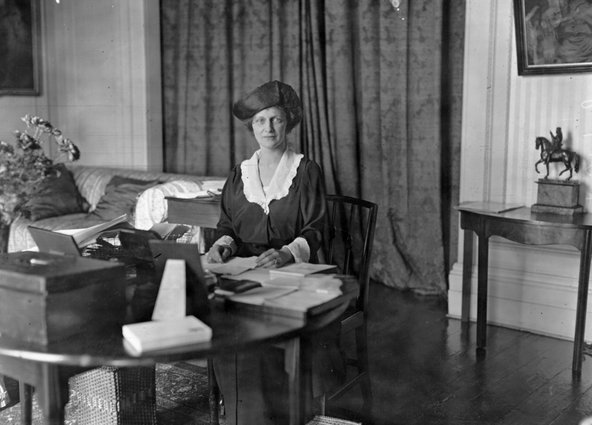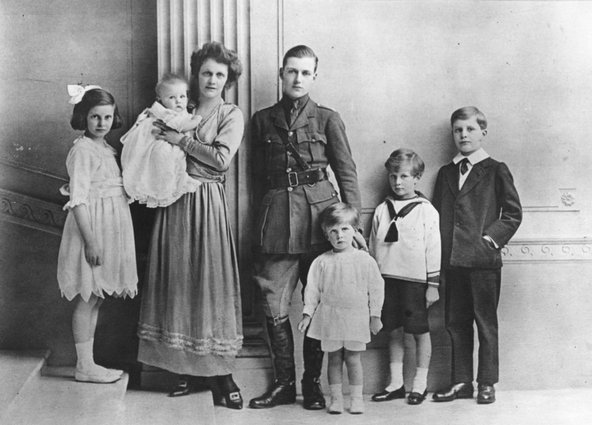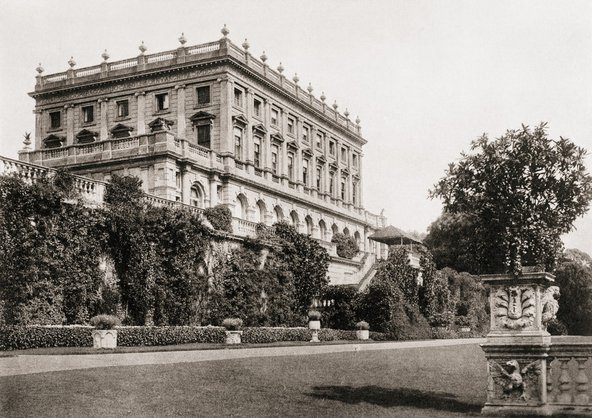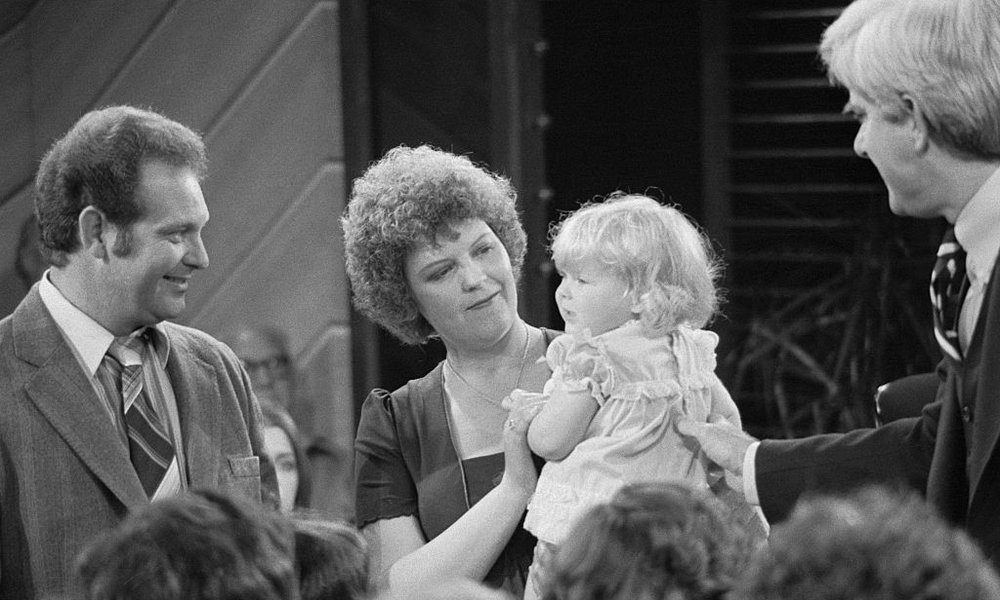How Nancy Astor became the first woman to sit as a Member of Parliament
by Professor Patricia Thane FBA
30 Nov 2018
In December 1919, Nancy Astor became the first female MP to take her seat in the House of Commons – alongside 706 men. This was a turning point towards gender equality, or, rather, the beginning of a long, slow turn.

Transformation of voting rights
1918 had seen UK voting rights turn around: all adult men were enfranchised, whereas previously 40% were excluded, mainly because of a property qualification. Women were enfranchised only from age 30 and if they or their husbands possessed the property qualification, which had been eliminated for men. This was due partly to women long being a majority of the adult population: 107 females per 100 males in 1911, later increasing to 110 in 1921 following wartime deaths. Male politicians resisted a majority female electorate. The coalition government equally feared a socialist takeover following the enfranchisement of many working-class men, the growth of the Labour Party and the recent Russian revolution. They hoped to avert this danger by enfranchising only older, better-off women, as they were less likely to be socialists than irresponsible young ‘flappers’.
The first woman MP refused her seat in Westminster
Then, in November 1918, parliament voted that all women could stand for parliament at age 21, which meant that women could stand as MPs before they could vote. The reason for this surprising anomaly was that some MPs opposed equivalence with the franchise qualification because they, as young men inhabiting lodgings or parental property and therefore not yet independent property holders, had also been elected before they could vote. Women should not be treated differently. Ellen Wilkinson, the tenth woman elected to Parliament, became a prime example of this curious situation. When she became an MP at age 33, she was unable to vote because, she said, she had ‘neither a husband nor furniture’. In the December 1918 election, 17 women stood but only one was elected, Countess Constance Markiewicz, Irish nationalist and feminist, in Holloway prison at the time for her role in the Easter Rising. Like other Sinn Feiners, she refused to take her seat in Westminster.
Nancy Astor: the first female MP to take her seat

Nancy Astor was American by birth and moved to Britain following divorce. She re-married wealthy Waldorf Astor, who became Conservative MP for Plymouth in 1910. They had five children. Nancy canvassed and organised for him, showing no interest in the contemporaneous women’s suffrage movement. In 1919, the death of Waldorf’s father made the son the new Viscount, requiring him to leave the Commons for the Lords. Waldorf did so reluctantly, planning to divest himself of the title and promoting Nancy as his stop-gap replacement until he returned. In her campaign for the seat, she presented herself as a loyal wife, uninterested in a political career or in gender politics, and was elected. As it was impossible to renounce a peerage until 1963, Waldorf could not return to the Commons and Nancy remained.
She found the Commons a lonely, often hostile, place. She later recalled: ‘When I stood up and asked questions affecting women and children, social and moral questions, I used to be shouted at for five or ten minutes at a time’. She found her office filled with hats sent by milliners seeking publicity. To avoid media obsession with her appearance she invariably wore a white blouse, black skirt, jacket and tricorn hat, with a white gardenia in her buttonhole. In 1920, she was joined by Liberal Margaret Wintringham who also replaced her husband, on his death. Many women lacking the advantage of a husband’s reflected glory wanted to stand for parliament, but for decades sexist prejudice prevented their selection for winnable seats for any party. This problem remains in 2018 when women, still a majority of adults, form just 32% of MPs, the highest proportion ever. The most women elected between the wars was 15 in 1931, when 62 women stood.
Nancy Astor’s causes
Feminists were dubious about Astor because she had no record of supporting women’s causes, but she was responsive to their briefings, perhaps grateful for support in an often hostile political world. She became Vice-President of the feminist 6-point Group. Women voters demanded her attention, sending her up to 2,000 letters each week. They similarly bombarded male MPs on policy issues, reminding them that women’s votes mattered. Women certainly used the vote and the flourishing women’s organisations of the period campaigned, with some success, for legal changes promoting gender equality. Most women MPs of different parties co-operated. Nancy Astor became good friends with Ellen Wilkinson, Labour’s first female MP elected in 1924. In 1921, she successfully reorganised the Consultative Committee of Women’s Organisations, established by suffragists in 1916, providing a link between women’s organisations and supportive MPs, male and female, promoting networking and regular meetings. Campaigns she supported included provision of nursery schools, widows’ pensions, more women police, improved maternity services. In 1923, a teetotaller, she promoted legislation prohibiting the sale of alcohol to under 18s. But, as a devoted Christian Scientist, she opposed equal divorce rights for women, introduced in 1923, and the vigorous women’s campaign for birth control. In March 1927, she organised a deputation to urge the Prime Minister, Stanley Baldwin, to keep his promises of several years to equalise the franchise. It took further lobbying, demonstrations and a threat to revive suffrage activism to bring this about in 1928.
The lead-up to World War Two
Astor continued to support women’s causes in the 1930s, including campaigning, unsuccessfully, for the admission of women to the diplomatic service. She was deeply committed to peace so, like many other women and men, she supported appeasement. She publicly supported the international women’s peace movement but was widely accused of fascism for her desire to keep friendly relations with Germany and entertaining Germans, especially von Ribbentrop, at the Astor country home, Cliveden.

However, she was not pro-Nazi and abandoned appeasement when they invaded Prague. She criticised Hitler’s treatment of women and was on the Nazi Black List for arrest when they invaded Britain. She was also among the Conservatives who forced Chamberlain from office. Throughout the war, she remained in parliament and continued to stand up for women’s rights. With her husband, she supported the people of Plymouth through severe bombing. Waldorf persuaded her that she risked defeat in the 1945 election, as Labour’s victory loomed. Reluctantly, she stood down and ceased political activity. She was not a conventional feminist but she raised the profile of women in UK politics, working with other women to edge the country towards gender equality.
Professor Pat Thane FBA is Research Professor in Contemporary History, Kings College, London. Her book Divided Kingdom. A History of Britain, 1900 to the Present explores the political, economic, social and cultural changes which have divided the nation and held it together, and how these changes were experienced by individuals and communities.

